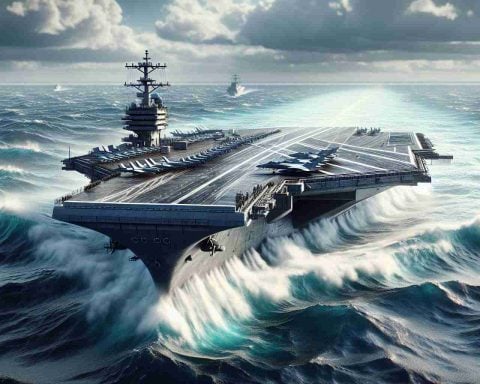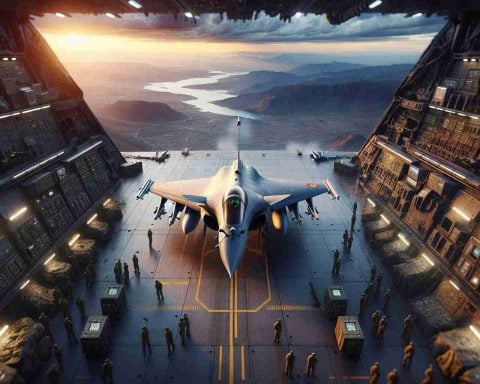In a bold display of military might, Taiwan faced a significant show of force from China over a 24-hour period, as 53 aircraft and 19 ships were detected near the island. This surge in military presence marks Beijing’s largest maritime mobilization in years, placing the region on high alert.
Taiwanese defense officials reported that these military units, including 11 warships, encroached into Taiwan’s airspace and waters by 6:00 am local time on Wednesday. This was the highest daily count of aircraft since a record set in mid-October, when tensions escalated following high-profile military drills by China.
The situation has intensified over recent days. Just a day prior, Taiwane reported the presence of 47 Chinese aircraft and 12 warships near its territory. China’s current deployment consists of around 90 ships maneuvering along the strategic first island chain, a line connecting Okinawa, Taiwan, and the Philippines.
While China’s government has remained silent on this escalating activity, a spokeswoman emphasized that China would defend its claim over Taiwan vigorously. Much of this tension is believed to stem from recent interactions between Taiwanese President Lai Ching-te and top US officials, a move that has incited Beijing’s ire.
Amidst these developments, Taiwan’s reliance on US military support has become more pronounced, with the United States recently approving a $385 million arms deal to bolster Taiwan’s defenses. This geopolitical drama continues to unfold, with both sides demonstrating a readiness to defend their interests.
Tensions in Taiwan: Latest Insights and International Reactions
In light of the recent intensified military activities near Taiwan, several emerging trends and insights are shaping the geopolitical landscape in the region. As China showcases its military prowess with a significant naval and aerial presence, Taiwan and its allies are responding with strategic measures and international collaboration.
Strategic Trends and Geopolitical Insights
The mobilization of Chinese military forces along the strategic first island chain signifies an increase in China’s tactical maneuvers aimed at expanding its influence in the East China Sea. This area, which spans Okinawa, Taiwan, and the Philippines, is becoming a focal point of military strategy for both China and allied forces seeking to maintain stability in the region.
Internationally, the rising tensions over Taiwan are reflecting broader geopolitical dynamics, including the strategic competition between the United States and China. As Taiwan’s reliance on US military support becomes more evident, with a recent $385 million arms package approved by Washington, the island is reinforcing its defense capabilities in anticipation of further escalations.
Security Aspects and Defense Readiness
Taiwan’s defense strategy heavily relies on advanced military technology and strategic alliances. The recent arms deal with the United States is part of a broader effort to enhance Taiwan’s security posture, which includes the acquisition of cutting-edge defense systems designed to counter potential threats from Chinese military operations.
Diplomatic and Economic Impact
The mounting military pressures have also led to diplomatic ripples across the globe, with countries closely monitoring the situation and evaluating their foreign policy approaches toward China and Taiwan. The economic implications are equally significant, as Taiwan plays a crucial role in the global supply chain, especially in semiconductor manufacturing.
Predictions and Future Scenarios
Looking ahead, experts predict an ongoing military buildup in the region, with potential implications for global trade and security frameworks. The strategic importance of Taiwan, coupled with its technological contributions to the global economy, ensures that developments in the region will remain a critical focus of international attention.
In conclusion, as tensions between Taiwan and China continue to escalate, countries worldwide are urged to navigate this complex scenario with a blend of diplomatic engagement and strategic preparedness.
For further information on Taiwan’s latest updates and geopolitical developments, please visit the Government of Taiwan for comprehensive resources and insights.



















